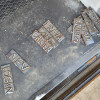WHETHER YOU’RE TRYING to convince someone in management or an arbitrator, your grievance argument is only as strong as your evidence. Fine oratory has its place, but rarely is anyone swayed by logic alone. They want evidence. Your job as a steward is to find that evidence wherever your grievance investigation takes you.
There are many kinds of evidence: eyewitness statements, documents, photographs and videotapes, and many other things. Any of these forms may be direct evidence or circumstantial evidence. Direct evidence points directly to a specific act or conclusion. Circumstantial evidence only suggests a conclusion.
For example, a time-stamped video of a worker arriving at his work station at 7:45 a.m. is direct evidence that he arrived in that location at that time. It is also direct evidence for the logical conclusion that he wasn’t somewhere else at that time.
If you use that video to argue he was late to work because start time is 7:30 a.m., the evidence is circumstantial. It suggests he arrived late, but there may be an explanation for why he wasn’t at his work station. Maybe he arrived on time but had legitimate business somewhere else on his way to his work station. To prove a case using circumstantial evidence, you generally need more evidence than one item.
Some people believe you can’t prove anything with circumstantial evidence, but you can. You simply need enough circumstantial evidence that only one logical conclusion can be drawn from it. For example, if I leave my dog alone in the house and come home to a puddle and a pile, I don’t need the direct evidence of DNA to know what happened.
Collecting evidence
KEEP IN MIND that everything you learn about the grievance you are investigating is (potentially, at least) evidence. From the moment someone comes to you with a complaint or problem, you should take notes. Those notes not only help you begin to figure out how to handle the grievance, but you may be able to use them as evidence, too.
If you always take notes, you will develop a record of what you saw, what you heard, and what you were told. Your notes tell a story that may help you win your argument. But in order to use them as evidence, you need to make sure they fully document your investigation.
Each time you write something down, date it. Put down the time as well, if that seems important. Indicate where you are and the names of everyone present.
When you interview the grievant or witnesses, you won’t be able to write down every word a person says. Write a summary of the main facts. Then show your notes to the interviewee and ask if they want to add anything. Don’t erase anything, but add any necessary points.
When possible, have your grievant and any witnesses you interview write down in their own words how events transpired and sign the document. Some people don’t like to go on record this way, in which case you may want to write down what they’ve said and have them sign your version.
Every conversation with management is an opportunity to collect evidence as well as to get a glimpse of what their argument will be. In your first meeting, don’t take a stance. Just ask them to explain what happened and how they plan to handle it. Ask follow-up questions, if needed, but don’t argue your position. You want to learn what evidence they have and how they plan to argue the case.
If you believe you’ll need company documents to process the grievance, you can let management know at this meeting what you need. But follow up your verbal request with a letter. Refusal by management to supply information pertaining to your handling of a grievance is an unfair labor practice (ULP) that the NLRB nearly always issues, but you will need evidence that you tried to get those documents in order to win your ULP.
Good evidence versus bad
NOT ALL EVIDENCE is equal. Whether it is direct evidence or circumstantial, to be convincing, evidence must be related to the case and must have the potential to prove the point it is used to make.
For example, if the company intends to prove John was drinking on the job on Friday, evidence that the week before he was arrested for drunk driving is not related to the case. What he did a week before has nothing to do with what he did Friday. The evidence is “immaterial.”
On the other hand, evidence that there were empty beer cans near his work station after Joe left work on Friday not only relates to their charge, it also has the potential to be used to show he was drinking on the job; that is, it is “relevant.”
Still, the empty cans are circumstantial — they only suggest that someone was drinking near there. The company would need more evidence — such as testimony that Joe smelled of alcohol and a photo of him bringing a six-pack-sized paper bag onto the property. That still might not be enough, but Joe’s starting to look pretty guilty.
Evidence requires one more element to be fully convincing: it must be perceived to be reliable. In Joe’s case, the company’s alcohol-smell witness would be crucial. If his story changed each time he told it, or if he had a long-standing grudge with Joe, you might be able to cast doubt on his testimony.
Likewise, the reliability of that photo could be questioned. Does it clearly show Joe’s face? Is it time-and-date-stamped? Does Joe have a reasonable explanation for what he brought to work that was the size of a six-pack?
In general, business documents are considered to be reliable, but you need to examine all such items carefully before basing your argument on them. Sometimes documents are altered, and often people present the wrong documents to make their case. For example, an assignment list kept by the supervisor was used as evidence a specific worker was in a specific location, but the case dissolved when workers from the floor testified that workers were often re-assigned during the day, but the assignment list was not changed. In another case, a worker claimed to have a doctor’s note that he was ill on the day he was out, but it turned out to be only a note from a nurse that he had visited the clinic, with no reference to illness or injury.
YOUR SUCCESS IN handling a grievance will depend largely on the quality (and in the case of circumstantial evidence, the quantity) of the evidence you gather. Arm yourself with “good” evidence.





